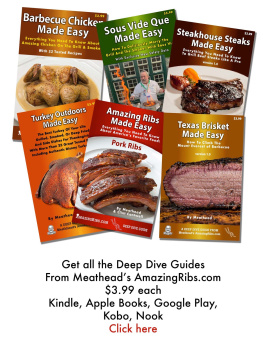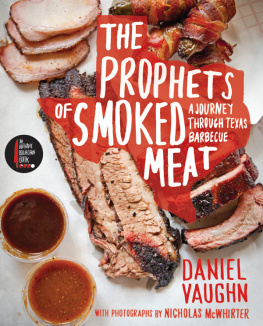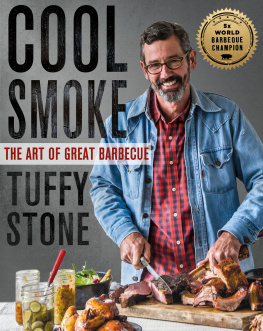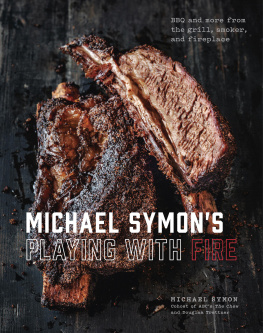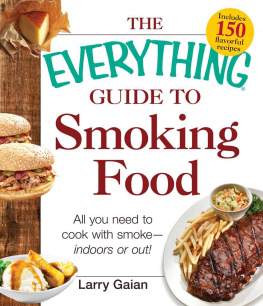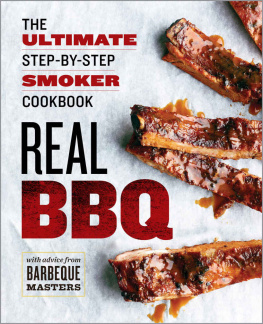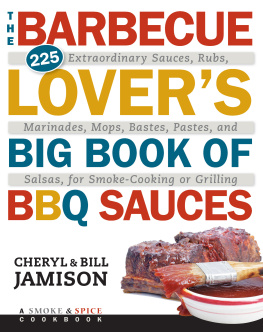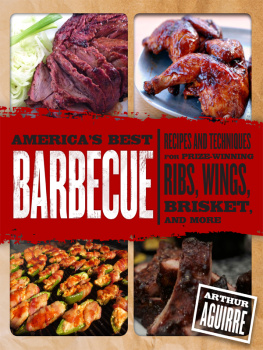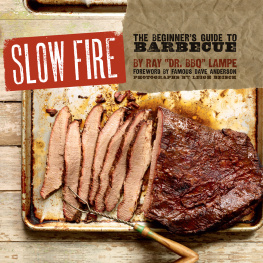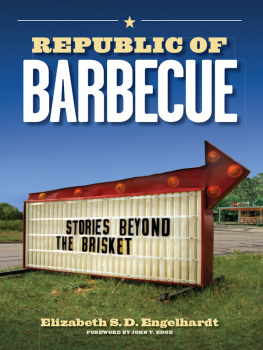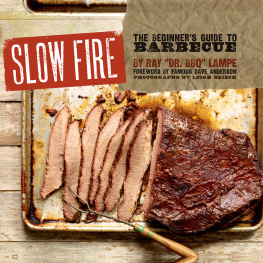

To all the people who have made food like this over
the centuries, and to the vaqueros whose voices
were never heard, I am honored to have this chance
to celebrate them through our recipes and stories.
CONTENTS



INTRODUCTION

Long before the first smoker was lit or sauce was ladled, barbecue was born with a Latin twist. The oft-forgotten vaquero origins of this meat-heavy and nomad-friendly style of cooking are the focus of this book, celebrating the greatest culinary traditions of Latin America, and rediscovering my familys heritage along the way.
As a third-generation member of the Davilas BBQ family, my style of cooking evolved from a strong base of family recipes and the rich culture that surrounds me in South Texas. But as I have explored my roots more deeply, Ive discovered my culinary references reach back to the vaqueros, the horsemen on the Iberian Peninsula who shepherded the prized cattle to the wide open lands of the New World.
At Davilas BBQ, weve always known how good our cooking is, as weve been serving the Seguin, Texas, community for three generations now. But in recent years Ive had the opportunity to travel, do some television and print media, and help give my hometown, Seguin, its rightful place on the BBQ map. To bring our historically important, Latin-influenced barbecue to a wider audience is supremely gratifying. Cowboy Barbecue feels like a natural progression in my journey as a chef, to write about my food and share my recipes while exploring the Old World techniques that Ive mastered. What I didnt anticipate at the start of writing this book was just how far the journey and my research into my family history were going to take me.
It All Began with This Man: My Grandfather, the Original Pit Master
My great-grandfather had a general store in the renowned barbecue town of Luling, Texas, in the 1930s and 1940s. My grandfather, Raul Davila, and his brother Adolph worked at the store but didnt want people assuming they had not earned their own way, so at the age of 14 and 12 respectively, Raul and Adolph got on a train headed west into the Hill Country, to work in a restaurant in Kerrville, Texas. When they reached their 20s, they returned to town to work at the Bob Davis Locker Processing Plant, as butchers and sausage makers. This was where they started to hone their culinary skills, learning Polish (adds garlic and spices) and German (simply seasoned and smoked) sausage-making techniques from the source as well as smoking techniques for barbecue. These European immigrants came to colonize Texas beginning in the 1830s, bringing with them their food traditions (and blending Polish polka and accordions into the South Texas music!).
By the 1950s, my uncle and grandfather were selling their sausages and barbecue out of my uncles very own dry goods and convenience store to joints from Lockhart to San Antonio. It wasnt long before Raul and my grandmother, Geronima, opened up their own place in Luling, named the Carnation Restaurant, serving barbecue and Mexican food. Raul added cayenne and other ingredients to give the sausage and barbecue his own Latin twist. At the time Seguin was the county seat and a more populated city than Luling, so my grandfathers next move was to strike a deal to open a new barbecue place in an old abandoned schoolhouse in Seguin in September 1959. No decorations, no cash register, and the whole family slept in two of the rooms at the back of restaurant. (To this day my father doesnt ever want to leave the restaurant, because its home to him, even in its newer location.) Raul built a pit outside and added a few tables inside. They were happy to be the first restaurant, outside of African Americanowned establishments, to serve African Americans in a public space in Seguin. In the 1970s, sausage making became so busy that they moved that part of the operation to its own building.

Left to right: Mike Hernandez, Adolph Davila (my great-uncle), and Guadalupe Gonzalez, circa 1948 at the Bob Davis Locker Plant.
But theres no doubt that the restaurant exists today due to my grandmothers jumping in whenever needed. She grew up on a working cattle ranch, which her father tended. They had their own pigs and grew all their own vegetables. She had only an elementary school education, but she figured out how to run the restaurant. And she made enchiladas and tamales as well as the barbecue on the menu. Her hard work was all about putting food on the table; after all, she had three kids to feed. Even today, she is still the taskmaster and the backbone of the family.
My Story: Third-Generation Pit Master
I always wanted to be around my dad, Edward Davila, and my dad was always at the restaurant, working as my grandfathers right-hand man and starting the concession and catering side of the business. The meat would come in and Id watch my grandfather break down a quarter of a cow, do the butchering and sausage making, and then take it all into the smoker. Id also sit out in the front of the restaurant, to watch people smile and enjoy the food. I loved the process of creating memories. Gathering over food with friends and family, you always remember what you eat and who you eat it with. I fell in love with creating that experience for people. I would hide in the catering van at four in the morning and wait quietly until my dad arrived at the catering spot, to try to skip school and be with him. At six or seven years old, Id stir the huge vats of scrambled eggs. I liked being part of the process.
MY COUSIN: TEX DAVILA MCLEOD
One of the more colorful characters in my family history is my cousin Tex McLeod. Ive often thought that his legacy is responsible for sending me on this vaquero-inspired journey in the first place. Tex was a cowboy who took his spin ropes all the way from South Texas to the Calgary Stampede, a world championship cowboy competition in Alberta, Canada, at which he won the All-Around Cowboy title in the 1920s. After traveling with Buffalo Bills Wild West show, he moved to England and had a second career as a famous silent film star in the 1930s. He went on to travel the world, teaching ropes and yarns to African kings and English royalty. His legacy as a showman and an explorer inspired me to want to follow in his footsteps, using my craft in cooking as my means of exploration, to do and see things that I had never done or seen before, as he did with his skills as a cowboy. Growing up, I was secluded in South Texas, but his story encouraged me to scour maps and use a globe, filled with the certainty that these challenges and adventures were mine to have. Ive found that the rugged essence of the western way of life that captivated Tex McLeods contemporaries is no less fascinating to the outside world today.
Next page

